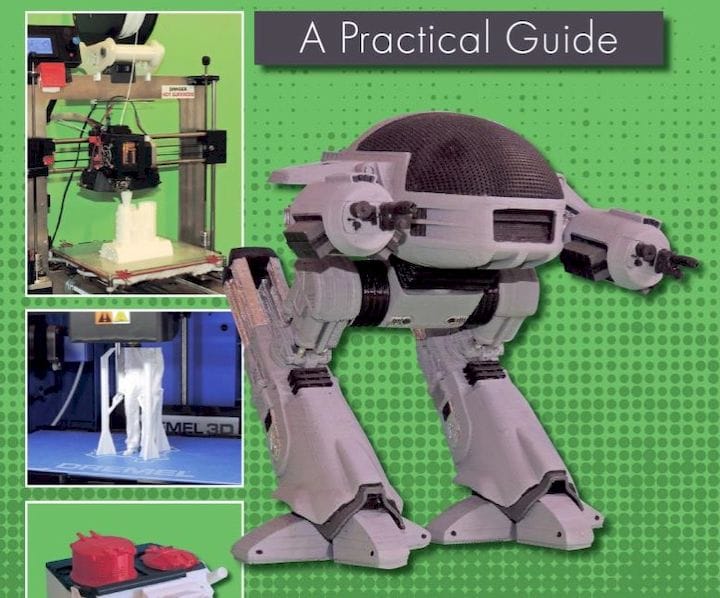![3D Printing for Model Engineers [Source: Amazon]](https://fabbaloo.com/wp-content/uploads/2020/05/image-asset_img_5eb095914702e.jpg)
This week’s selection is “3D Printing for Model Engineers: A Practical Guide” by Neil Wyatt.
This is an introductory book targeted at hobbyists who seek to use 3D printing to produce miniature models of desirable characters, vehicles or even small machines. The assumption is that the reader does not have, nor know much about the science of 3D printing. Are you a 3D printing model engineer?
As you might expect, the book first introduces the basic concepts required to comprehend 3D printing, and then continues to traverse the entire lifecycle of 3D printing operations. This book, published in 2018, is not long, being only ~140 pages, but seems just right to get someone started into the technology.
The first chapter explains the basics of 3D printing, including a bit of history, as well as material on some of the terminology used in this domain, such as cartesian geometry, CNC, or RepRap. Based on that knowledge, subsequent chapters get into the details of what you must do to successfully 3D print objects.
A fair amount of space is dedicated to the essential concept of the 3D print lifecycle: Design, Export, Slice and Print. Of course, Wyatt spends some time explaining the nature of 3D models, and in particular the often-found necessity to perform 3D model repairs. His graphics explain these concepts very well.
There’s not a great deal of detail on the science of determining optimum 3D printing parameters, but that is likely a subject beyond the scope of this level of book. The intent here is just to get one started in the technology, and clearly there will be subsequent learnings required for top-notch 3D printing operations.
3D Print Model Repositories
There’s a section discussing use of “other people’s 3D models” on the web, and I think it’s a great summary covering all aspects. This even includes a discussion of drawbacks when using 3D models from online repositories, something not often discussed, and something that should be understood by beginners.
Quite a bit of material is spent discussing how to design 3D objects for printing using CAD software. In spite of the length of this segment, a proper learning session in CAD is likely again beyond the scope of this book. But Wyatt’s high-level view is sufficient to get one started and quickly move on to specific tools and training in an intelligent fashion.
![Sample page from “3D Printing for Model Engineers” [Source: Amazon]](https://fabbaloo.com/wp-content/uploads/2020/05/image-asset_img_5eb09591ae6bb.jpg)
I particularly like the way the book is laid out, showing clear diagrams and images to make important points. I found this book to be a bit more practical than many of the “sensational” introductory books on 3D printing that overly rush you into the hobby.
Book Relevant For 3D Print Novices
The book continues with sections on all relevant areas that a novice 3D printer operator would likely encounter, including: support material handling, 3D printer tweaking, design tips, part assembly, post processing and much more. Along the way there are a couple of projects that you could attempt to do, and from these you would learn a considerable amount. There’s nothing like trying something new!
I recommend this book for anyone who is not currently using a 3D printer, but is considering doing so.
Via Amazon











This week’s selection is “3D Printing Projects” by Dorling Kindersley, a.k.a. “DK”.